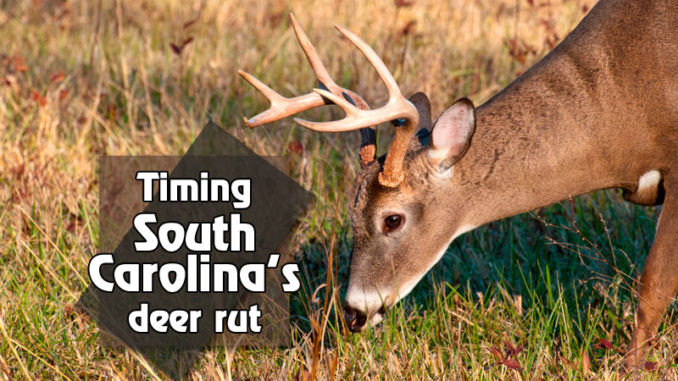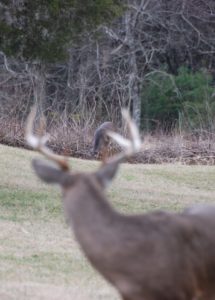
Deer biologists would love to be able to say that on Oct. 1, the rut will peak in 23 days, but it’s not that simple. Biologists often examine fetuses and can pinpoint very accurately the date of conception, but not every doe enters estrus on the same day.
According to Charles Ruth, deer project supervisor for the S.C. Department of Natural Resources, the historical data for the Palmetto State shows that most record-book deer are taken the last two weeks of October and the first two weeks of November.
One thing is for sure, October is a good time for hunters wanting to tag a trophy buck to become more selective. That so-so 8-pointer that steps out in range with a bit of trepidation is probably watching his step. On the other hand, a buck with a blown- up neck, undergrowth stuck in his rack and an air of owning the place might possibly be the best buck in the immediate area.

According to Mark Buxton of Southeastern Wildlife Habitat Services in Magnolia, Ala., which provides deer-management services across the Southeast, the rut is not triggered by weather or temperature but photoperiod — the amount of daylight that strikes a deer’s eye.
“The timing of the rut will occur at different times in different areas” said Buxton. “In places like Alabama and Mississippi, the rut may not occur until late January or even February, while in North and South Carolina the rut occurs in October and November, and will even vary by a couple of weeks across that area, but it rarely varies much year to year because the photoperiod remains pretty consistent.”
Unfortunately for hunters, when the rut does kick in during a period of warm weather, most of the rutting activity occurs during the most temperature comfortable time — at night.
“Temperature will restrict deer movement during daylight hours. By the fall, deer have shed their summer coats and put on their winter coats,” Buxton said. “Just like you and me, they aren’t in much mood to be active while it’s hot and they’re wearing long johns, so all the activity occurs after dark when the temperature is cooler than during the day.”
If the does are not moving, the bucks will not be moving, either, an unfortunate cycle that many hunters blame on the moon phase or even hunting pressure.
Buxton added that a well-defined rut has much to do with a well-balanced deer herd, and hunters who have never hunted properly managed land during the rut really can’t comprehend what “hunting the rut” looks like.
 “When your herd is out of balance, and by that I mean your buck-to-doe ratio and the herd age structure, you get a trickle rut,” Buxton said. “All does should go into heat within the same 7- to 10-day period. When your herd is well-synchronized, you’ll have bucks chasing does all through the day and all over the property. That’s when you understand what the rut is really all about.”
“When your herd is out of balance, and by that I mean your buck-to-doe ratio and the herd age structure, you get a trickle rut,” Buxton said. “All does should go into heat within the same 7- to 10-day period. When your herd is well-synchronized, you’ll have bucks chasing does all through the day and all over the property. That’s when you understand what the rut is really all about.”
Buxton concluded that hunters who want to witness a synchronized rut, a week to 10 days when “the rut is wide-frickin open” and you’re as likely to see bucks chasing at noon as early or late in the day, need to focus on three things to get their deer herd in balance.
• Good buck to doe ratios. Typically, 1 buck per 3 to 6 adult does, but may vary.
• Properly balanced age structure. This means your property will contain almost as many mature deer as young deer but with an appropriate year class system to replace those deer that are harvested or ago out.
• Good nutritional plan. Deer are healthy with a well-balanced diet which includes year-round food and mineral supplies.


Be the first to comment